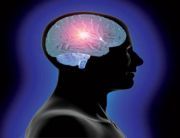Article
For Headache Sufferers, Comorbidities and Risk Factors Shape Migraine Experience and Treatment
Author(s):
Teasing out relevant the relationship among risk factors, comorbidities, and migraine is challenging but critical for optimal migraine treatment.

Teasing out relevant the relationship among risk factors, comorbidities, and migraine is challenging but critical for optimal migraine treatment, said the University of Texas-Southwestern’s Deborah Friedman, MD, MPH. She mapped out these relationships on May 1, 2014 during a session on headache updates at the American Academy of Neurology’s 2014 annual meeting in Philadelphia, PA.
Distinguishing between comorbidities and risk factors, she noted that comorbidities exist simultaneously with but are independent of a given disease state, while risk factors make it more likely that an individual will “get” a disease. However, the conceptual distinction is not easily made in practice. For example, there may be common neurobiological determinants that increase the risk for both seizure and headache, and head trauma may also cause both conditions.
Psychiatric disorders share a similar complicated and intimate relationship with migraine. There is a confirmed two to 10-fold increased risk of migraine in individuals with mood disorders, and 25% of migraine sufferers also meet criteria for a mood disorder. The chances for mood disorder increase with migraine duration and frequency, perhaps reflecting the increased impact that headaches have on quality of life and the increased disability inflicted on sufferers of severe migraine.
Major depressive disorder, together with anxiety and phobias, shares a bidirectional relationship with migraine, then, but causality still remains unclear. In some cases, the conditions may share a common known environmental risk factor, such as childhood abuse, which is more likely in both groups. Whether the disorders share neurobiological determinants is still unknown.
Citing work done by Michigan State University’s Naomi Breslau, Friedman noted that individuals who suffer any type of severe headache are more likely to attempt suicide, and the likelihood goes up with the severity of headache disease burden. Migraine sufferers are also more likely to experience anxiety; general anxiety disorder is five times more common in individuals with migraine, and panic disorder occurs three times more frequently migraine sufferers than in the general population. Overall, the disorders are seen more commonly in individuals with chronic migraine than in those whose migraines are episodic.
Clinicians should be vigilant for the presence of these disorders, and should ensure that depression and anxiety are assessed in all headache sufferers. Friedman recommends administering tools such as the GAD-7 and the PHQ-9 to screen for anxiety and depression, respectively, and including a thorough psychiatric history in the initial intake. Some migraine medications can also be effective treatments for anxiety, and clinicians can sometimes target both conditions with one medication. Psychological therapy should also be a key component of treatment “Everyone who treats headache should know a good cognitive behavioral therapist,” said Friedman.
Turning to physical disorders known to be risk factors for or comorbid with migraine, she listed those cardiovascular conditions with confirmed association: Raynaud’s phenomenon, patent foramen ovale, mitral valve prolapse, and atrial septal aneurysm. Individuals with migraine are five times more likely to have Raynaud’s phenomenon; for those individuals, clinicians should avoid beta blockers, triptans, and ergotamine-containing medications. Consideration can be given to using calcium channel blockers.
The research picture has been mixed whether closure of patent foramen ovale (PFO) helps migraines, and the exact mechanism of the association is still unclear. Given the known increased risk of cryptogenic stroke in patients with PFO, it is possible that the white matter hyperintensities known to exist in individuals with PFO are also linked to the onset of migraines. Another hypothesis proposes that the mixing of venous with arterial blood caused by a PFO introduces an unknown trigger substance into brain arterial circulation. In any case, current data do not support PFO closure only for migraine mitigation.
Epilepsy is another disorder whose sufferers experience more migraine — 2.5 times more than for those without epilepsy. Migraine and epilepsy sufferers also share many of the same comorbidities, and migraine can be understood as a brain disorder that may share some underpinnings with epilepsy. Support for this relationship may be found in further study of the migraine variant known as “migralepsy,” which manifests as migraine aura-triggered epilepsy, and is perhaps related to the cortical spreading depression seen in aura. Clinical considerationswhen treating individuals with comorbid epilepsy and migraine include again considering medications that may treat both conditions, and also avoiding medications that may lower the seizure threshold.
Finally, sleep and migraine are intimately intertwined in a complicated relationship. Headaches can be triggered by too much or too little sleep, sleep at the wrong time, or sleep of poor quality. For many migraine sufferers, though, sleep is required to terminate a headache. Sleep can also be affected by a host of confounders, which may also affect headache patterns: these include depression, anxiety, medication use or overuse, caffeine use, and restless leg syndrome.
Interestingly, children with migraine are more likely to experience parasomnias such as sleepwalking, and adult migraine sufferers will often report a childhood history of such parasomnias. The headache history should thus include close questioning about sleep habits, sleep quality, parasomnias, and caffeine and medication use; use of a validated sleep questionnaire and screening for sleep apnea should also be considered. Where indicated, a sleep medicine consult can be very helpful to optimize sleep and minimize its impact on migraines.





